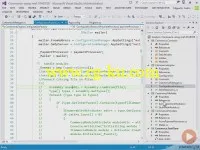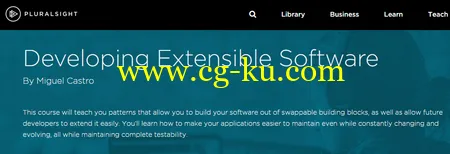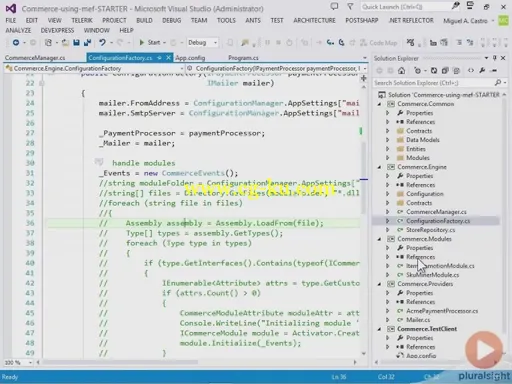
Developing Extensible Software
MP4 | AVC 588kbps | English | 1024x768 | 15fps | 3h 46mins | AAC stereo 90kbps | 893 MB
Genre: Video Training
In today's competitive world of software development, using methodologies such as Agile lets us get products to market quicker and in a controlled fashion, but that's not enough. Applications need to be able to grow without being totally rewritten. Sure, there eventually comes a time when every app needs a major overhaul, but if applications are written to be extensible in the first place, the overhaul can be performed in pieces; and in the meantime, new features can be added or existing features changed without bringing the app down. This "extensibility" in our design is becoming more and more important every day as software shops compete with each other for work and even with other countries. There have been many articles and design documents written on things like inversion of control in the UI tiers. Many books have dedicated chapters to injecting objects into MVC controllers or WPF ViewModels, but not many have focused on the meat of a system, the business tiers.
These are the tiers that are accessible to the UI of a system, more than one in many cases. And these are the tiers that can be most volatile and subject to change and enhancement. In this course, I'll show you some of my favorite extensibility designs and techniques which will let you write software in building blocks that can be connected and interconnected in different ways. I'll keep most of my focus on the business tiers, which despite the lack of user-centric visual glamour, is where you get to exercise the most creativity. You'll be able to roll out applications and continuously add or change things without affecting the core infrastructure in place. To me, this not only makes the software better, but more fun to write!
Welcome and Course Description 3m 52s
Importance of Extensibility 9m 48s
Abstraction and Dependency Injection 18m 15s
Implementing Providers 33m 58s
Implementing Modules 53m 0s
Advanced Module Usage 23m 26s
Pipelines 43m 0s
Procedural Overriding 18m 33s
Using MEF 20m 56s
Conclusion 1m 34s


发布日期: 2016-02-03